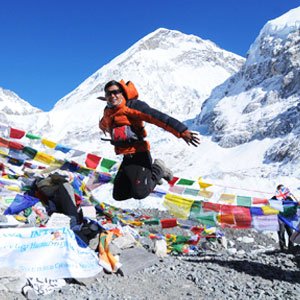Manaslu Circuit trek permits
For the Manaslu Circuit trek, foreigners need three permits. They are the Restricted Area Permit, Manaslu Conservation Area Project (MCAP) permit, and Annapurna Conservation Area Project (ACAP) permit.
The Manaslu region shares a border with Tibet. Between Jagat and Dharapani, you will need a restricted area permit, which trekkers can get from the Department of Immigration.
A fully licensed trekking agency like ours can only help you get a restricted area permit. You cannot obtain this permit on your own or with the help of an independent licensed guide.
Also, a minimum of two trekkers are needed to get this permit. If you are a solo traveler, do not worry; we will help you get the permit. There is an option for a ghost permit, or we can apply for the permit with some other group and later trek separately.
You can obtain the MCAP and ACAP permits yourself from the Nepal Tourism Board. The MCAP permit protects and preserves the ecosystem and helps the local community along the Manaslu Circuit trail.
The ACAP permit is needed because you will briefly enter the Annapurna Conservation Area below Bhimthang (on the way to Dharapani/Besisahar).
The fees for all three permits are mentioned below:
Manaslu Restricted Area permit cost from September to November: USD 100 per person for the first seven days and USD 15 per person each day after that
Manaslu Restricted Area permit cost from December to August: USD 100 per person for the first seven days and USD 15 per person each day after that
- Manaslu Conservation Area Project (MCAP) permit cost: approx USD 30 per person
- Annapurna Conservation Area Project (ACAP) permit cost: approx USD 30 per person
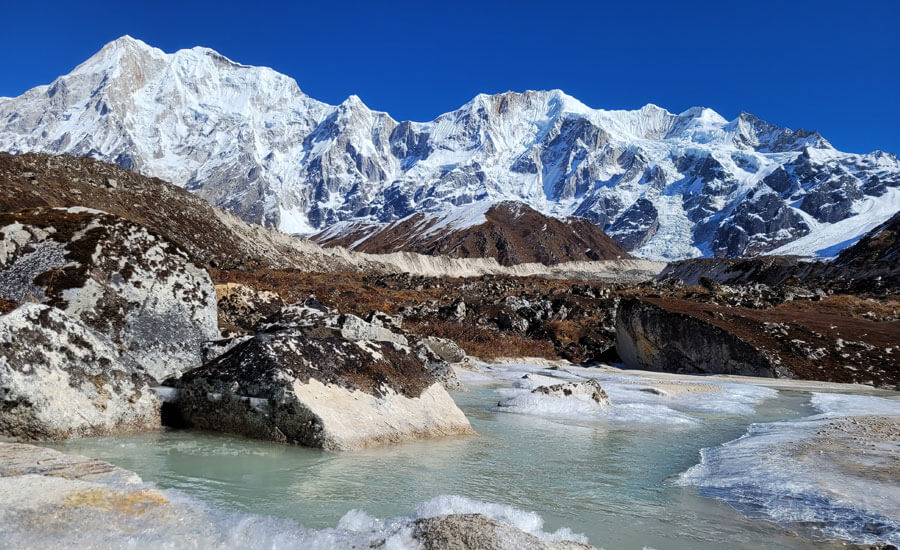
Manaslu Circuit trek difficulty and altitude sickness
The Manaslu Circuit trek difficulty is strenuous. The trail is not technical but offbeat. Trekkers have to be very careful and maintain good balance on the steep, rugged sections. The trail continuously ascends or descends, and 6 hours of daily walking demands good physical and mental fitness.
Difficulty factors:
Terrain
You will trek through dense forests in the first few days of the journey. Some parts of the route detour around landslide debris. These areas are a bit on the slippery side and require extra care. Similarly, stream crossings on stones, wooden log bridges, and suspension bridges spread throughout the trail.
You will also trek via glacier moraines in the upper part of the region. Crossing the Larkya La pass is the most challenging, involving almost 9 hours of walking.
Daily walking hours and trek distance
The Manaslu Circuit trek distance is roughly 180 kilometers. However, the distance can decrease or increase if you opt for a short itinerary or combine the Tsum Valley in your trek. Every day, around 10 to 12 kilometers of walking is given, which requires 6 to 7 hours on average.
How much weight will you carry?
If you are trekking with a porter, which we highly recommend for a better experience, you will carry up to 5 kg in your day pack. Your porter will carry the rest of your luggage (up to 9 kg). In your day pack, you can pack essentials like documents, money, snacks, water bottles, lip balm, SPF, etc.
Weather in Manaslu Circuit Trek
The Manaslu Circuit trek weather varies throughout the year. Generally, the temperature at the lower elevation is higher than that at the upper elevation. As the altitude increases, the climate gets colder.
However, exposure to the sun and wind will also increase. You can expect up to 28°C below 2,500 meters in the spring and autumn (best trekking seasons). Meanwhile, in the upper part of the trail, the temperature ranges between -10°C and 12°C.
*We recommend trekkers dress up in layers and remove or add clothes as needed.
Trekking infrastructure
The trekking infrastructure along the Manaslu Circuit trek route is scarce. Trekkers have to adjust to basic hut-like accommodations called tea houses. Twin rooms and shared washrooms are common.
Charging and hot shower facilities are available in most villages, but cost extra money. Snacks and nuts are not readily available to purchase along the trail. It will cost you 3 to 4 times more or higher than that if you find it. So, pack ample snacks for the journey.
Altitude in the Manaslu circuit trek
The Manaslu Circuit trek involves an elevation gain of over 5,000 meters, but you will spend no more than half an hour at this height. You will generally spend nights below 4,500 meters but hike above 5,000 meters.
Once you reach 2,500 meters or go above this elevation, the risk of altitude sickness increases. It happens when your body is not used to the high environment and climate.
So, acclimatization is a significant part of Manaslu Circuit trekking, especially for those who do not have previous high-altitude exposure. Let's make a few things clear first:
- Altitude sickness can happen to anyone. It doesn't matter if you are young or old or have previous trekking experience. More importantly, if you have suffered from altitude sickness during your past treks, you are most likely to get that on the Manaslu Circuit trek as well.
- If you have not suffered from altitude sickness in your previous treks, that doesn't mean you will not suffer it on your next trek. So, be cautious.
- Meet your doctor and get the medicine prescribed for altitude sickness and some general medicines for indigestion, headache, nausea, body aches, etc.
What are the symptoms of altitude sickness, and how can it be avoided?
Symptoms: Difficulty breathing, headache, vomiting, nausea, insomnia, loss of appetite, dizziness, etc.
Below are some of our advice to avoid altitude sickness:
- You might have heard or read that you should drink 4 liters of water daily during trekking. Frankly, it is not easy to drink that much water while you are trekking and when the climate is mild. Plus, it will not be ideal to pee on the way frequently. So, we suggest you manage your water intake by around 2 liters a day and add other fluids, such as soups, teas, etc, to your diet. Similarly, you can carry ORS powder for instant hydration and an energy boost.
- Trek high, sleep low. Follow this golden rule, and you will most likely avoid altitude sickness. Acclimatization days are specially made for this.
- Do not rush. Maintain your pace. Listen to your body. You do not have to overexert yourself. Take your time and enjoy the journey.
- If you experience any symptoms of altitude sickness, first treat it and then ascend further.
- Trust your guide's advice. They have first-hand experience of managing altitude sickness during trekking.
Larkya La Pass
Larkya La is the highest point of the Manaslu Circuit trek. It is located 5,10 meters above sea level. Crossing this pass takes around 9 hours of walking. You will start climbing to the top of the pass before sunrise.
The trail is not straightforward either. First, you have to descend following an unclear trail and cross a steep grassy slope. You will then pass by a moraine to the edge.
From here, descend to four frozen lakes and climb a steep uphill track to the top of the pass. The descent from the pass is not that challenging, but you have to navigate steep grassy moraine and meadow.
How do you prepare for the Manaslu Circuit trek?
Preparing for the Manaslu Circuit trek depends on your fitness, previous trekking experience, and knowledge about the Himalayan trails. First of all, good fitness is important for this trek. You need to be in good shape to have the best trekking experience.
Otherwise, you will feel exhausted after just 1-2 hours of walking. So, build your strength, stamina, and endurance. You can do so by exercising, going on regular walks and day hikes, strength training, cardio, etc.
Second, previous trekking experience is crucial for treks like the Manaslu Circuit because of its off-the-beaten-path terrain. To build your experience, you can do the Langtang Valley trek, Annapurna Base Camp trek, Everest Base Camp trek, Mardi Himal trek, etc.
Finally, knowledge and understanding of the Himalayan trail are another factor that makes or breaks your overall experience. The Himalayan trails are not like other mountain ranges. They are much more demanding, high, and lacking in terms of trekkers' infrastructure.
So, if you have done some treks before you join the Manaslu Circuit, you will have a general understanding of what to expect. Similarly, we also recommend researching the trek before you embark on it.
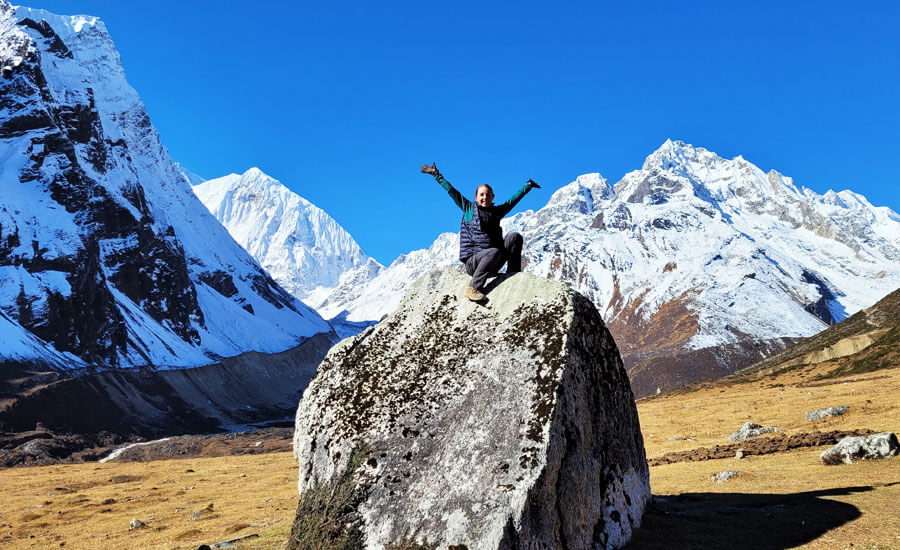
The best time to embark on the Manaslu Circuit trek
The Manaslu Circuit trail is open for hiking throughout the year; however, some months have more challenges than others. The Manaslu Circuit trek's best time is March to May and September to November.
Spring (March to May)
Spring is the most fantastic time of the year to trek in the Manaslu region. Rhododendrons and other flowers make the trekking route extremely scenic at lower altitudes. You also get a moderate climate and stable weather, and the mountain views are crystal clear.
Summer/monsoon (June to August)
The summer and monsoon seasons go simultaneously in Nepal. The hot climate, high humidity, and rainfall add more difficulty to the trek. Likewise, the trails are slippery, and there are leeches in the lower region. However, if you are into vegetation and biodiversity, then you will love this trek in this season. Prices of accommodation and food are also low.
Autumn (September to November)
Autumn is the finest time of the year for the Manaslu Circuit trek. It is festival season in Nepal, so the environment is quite delightful. All temples around the country are open to visitors. The weather is stable in the Himalayas, and the climate is mild, ideal for trekking. Long daylight hours allow you to fully enjoy the views and the journey.
Winter (December to February)
Winter is another off-season for Manaslu Circuit trekking. However, it also offers the best mountain views, covered in a thick white blanket of snow. The price of accommodation and food is also lower in winter, so that is another benefit. The cold climate and unstable weather make trekking more challenging.
Accommodation facilities along the trail
The Manaslu Circuit trek route has tea houses. These are simple yet comfortable accommodations for trekkers in the Manaslu region. There is a central dining area in the tea houses, where trekkers have food and mingle with each other.
Likewise, the dining area usually has some sort of traditional heating system, so it is the warmest place in the tea house. The rooms mostly have two or three beds, and washrooms are shared. In some villages, you may get a single room.
You will get a mattress, blanket, and pillow. However, transporting materials and goods in and out of the region is very challenging and quite expensive, so the best you can get on this trek is simple service.
Note:
- Carry a high-quality sleeping bag during the trek.
- Bedsheets may not be very clean. Carry a bedsheet and even a pillow cover.
Now, let's talk about the most important thing: the washroom. As we mentioned earlier, washrooms are mostly shared. Toilets can be Western or squat-style. Be prepared to use both. Make sure you are carrying enough paper soap, toilet paper, and hand sanitizer.
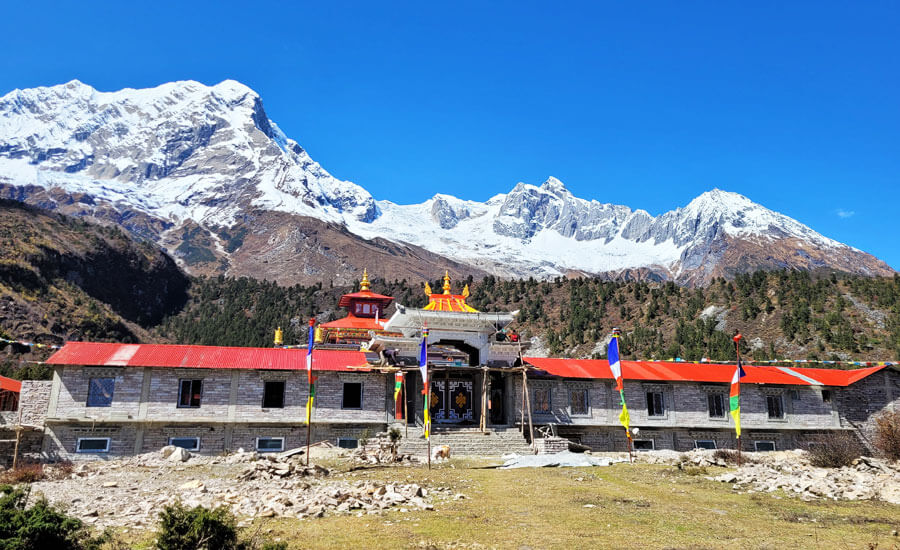
Food in the Manaslu Circuit Trek
Trekkers eat in tea houses. We must emphasize that the food options along the Manaslu Circuit trail are not massive like those in Everest and the Annapurna region, but you will have decent options to choose from.
Dal Bhat and Thukpa are the main dishes that you will have at least once a day. Both are high in nutrition, inexpensive, and delicious. These two dishes are available throughout the trail.
Similarly, you will also get different types of fried rice and soups. Momo, chow mein, Thenduk, Dhido, stew, curries, pasta, burgers, etc, are also available in many places.
The breakfast option usually includes pancakes, omelets, boiled eggs, fried eggs, mashed potatoes, toast, chapati, muesli, oats, etc. You will also find a good selection of bakery items in some villages.
Different teas, like milk tea, black tea, masala tea, green tea, ginger honey tea, lemon tea, etc., are available for beverages. You will also get black and milk coffee. Butter tea is a delicacy in the mountains that you should definitely try.
Drinking water is also widely available. Tea houses provide boiled water for drinking at a very expensive price. Bottled water costs 5 to 10 times more, so we do not recommend buying it. It is also bad for the environment because you will generate more waste.
Instead, carry reusable water bottles, water purification tablets, or your choice of portable water purification system. We also recommend carrying a big 2-liter water bottle for normal water and a small tumbler for hot drinks along the way.
Cost of Electricity, WiFi, and hot showers in the Manaslu Circuit Trek
The hot showers cost extra money. You can expect to pay USD 3 to USD 7 for each shower. The cost is higher at high altitudes. Tea houses mostly rely on wood and solar power to heat water.
Likewise, charging also costs a few bucks (USD 1 to USD 3 or 4), depending on the device. The rooms do not have charging slots. Trekkers can charge their devices at reception or, usually, tea houses have a dedicated charging station.
Pack extra batteries, a power bank, and a solar charger for the journey. WiFi and cellular networks are unreliable on the Manaslu Circuit trek route. You may get WiFi service in some tea houses up to Sama Gaon, but the network will be unstable.
The cost is again USD 3 to USD 5. Trekkers can obtain a tourist SIM in Kathmandu. We recommend the NTC SIM for the Manaslu region instead of the NCELL SIM. NTC has a bit better coverage but is not highly reliable. Many sections of the trail do not have any coverage, so prepare your mind to go off the grid.
Travel insurance and why it is required?
Travel insurance is essential for the Manaslu Circuit trek and must cover emergency helicopter evacuation and medical bills.
You must be extra careful when purchasing travel insurance because most do not cover helicopter evacuation in the Himalayas. So, make sure you communicate clearly with your insurance provider.
Now, you may ask why you need travel insurance with helicopter evacuation and medical bill coverage. It is because of the region's remoteness and the unavailability of transportation and decent health facilities.
If you get sick, injured, or see unseen situations like natural disasters, a helicopter evacuation is necessary. Without insurance coverage, you have to pay a lot of money.
*Note that foreigners cannot purchase travel insurance in Nepal, so make sure you get one in your country.
Transportation is involved during the Manaslu circuit trek
During the Manaslu Circuit trek, you will use a local or private four-wheeler to drive to and from the trail. The drive from Kathmandu to Machha Khola, where the trek starts, takes 8 to 9 hours.
The highway is well-made for the most part. Once you reach Arughat, the road will get bumpy. It will be around 1 to 2 hours of a bumpy ride. The scenery is jaw-dropping throughout the way.
Guide and porter
Guides are necessary for the Manaslu Circuit trek. You must travel with a local licensed guide. We provide native, experienced guides to our guests. They will have a good command of English, know the trail, and have deep knowledge about the region, locals, and their culture.
The guide will accompany you throughout the journey. You will meet him in Kathmandu and return to the city after the trek ends with him. In addition to his expert knowledge, the guide will also get you the best accommodation and suggest good lunch stops.
You can learn a lot about the locals along the Manaslu Circuit trail from your guide. Likewise, porters are also part of this trek. You have the option to hire a porter or not. We recommend trekking with a Porter because they carry duffel bags for you. So you can explore freely.
Moreover, navigating the offbeat terrain of the Manaslu Circuit with heavy weight is tricky, especially if you do not have a good balance. The best thing is that you are giving job opportunities to the locals and helping the local economy. With a guide and porter, not even a single moment will be dull for you during the trek. They will keep you safe, entertained, and motivated.
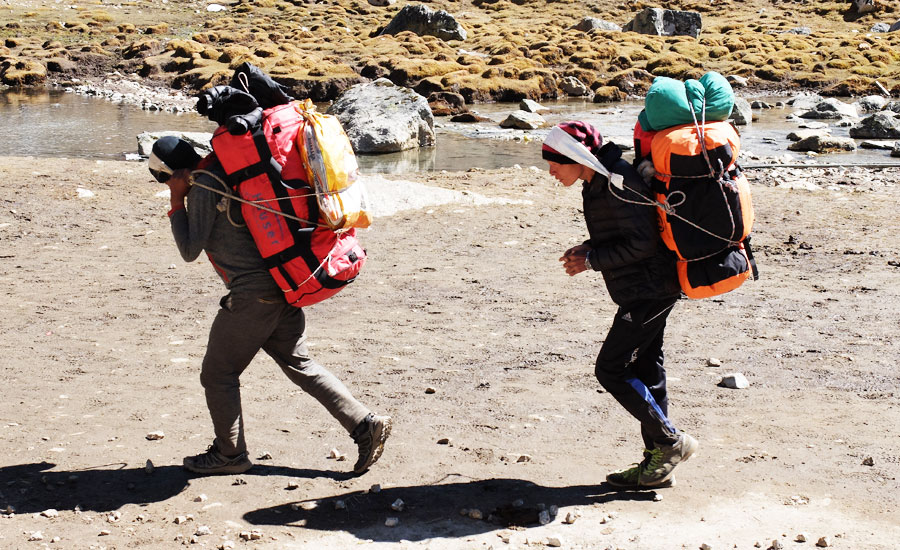
Tipping guide and porter
Tipping culture is common in Nepal's travel industry. It is more like a custom to tip your guide and porter if you are happy with their service. It is expected and a good thing to do because their salary is not that high.
Tips help them a lot and also make them happy and motivated to provide top-notch service to the trekkers. So, how much should you tip? It is all up to your wish.
Generally, USD 4 per person per day for the guide and USD 3 per person per day for the porter is considered a good tip. Consider tipping 10% to 15% of the total cost if you are in a big group. You can, of course, split the tip among all the trekkers.
Manaslu Circuit trek cost
The Manaslu Circuit trek cost depends on your itinerary, the time of the year you are trekking in, the group size, and the services included in the package. If you are doing the trek in a big group, you will get the best per-head cost.
Likewise, the restricted area permit cost is higher between September and November than in other months. But it is also the finest time to do the Manaslu Circuit trek.
As you must join an organized trek to explore the Manaslu Circuit, the package cost includes accommodation and meals during trekking, accommodation in Kathmandu, transportation, guide and porter expenses, permits, taxes, and company charges.
For instance, the cost of a 13-day Manaslu Circuit trek can start around USD 950 and may vary depending on the company, its reputation, and its service. Likewise, a standard 18 to 19-day Manaslu Circuit trek costs starts around USD 1550, and you can expect another USD 500 to USD 700 rise if you combine the Tsum Valley.
So, these are the average amount for the packages. Additionally, you will incur other miscellaneous charges not included in the package cost, such as international flights to and from Kathmandu, travel insurance, tips, expenses for trekking clothes and gear, shopping, food, and drinks in Kathmandu, among others. Also, have an emergency fund aside. A highly recommended local travel partner for the Manaslu Circuit trek: Adventure White Mountain
Hope this Manaslu Circuit trek guide blog helped you answer most of your questions. Let us introduce ourselves and explain why we are a suitable local travel partner for you in Nepal. We, Adventure White Mountain, have been actively helping foreigners on their trekking, tour, and climbing expeditions in Nepal for more than a decade.
Our expertise, service standards, and hospitality set us apart from the market. We are a team of local travel experts who have mapped all trekking routes and climbed many mountains in Nepal.
Similarly, our guides and porters are natives, so you get the best experience and information about the regions. Likewise, our prices are the best in the market.
We provide competitive rates for tours, treks, and other adventure activities. Our 24/7 support, full cost and policy transparency, professionalism, and high customer satisfaction rate make us trustworthy and reliable.
You can trek safely and freely with us. Our strong team provides you with the confidence to go beyond your limits and imagination in the Himalayas.
Contact us freely if you have any questions about the Manaslu Circuit trek. We would love to answer your questions. Book Manaslu Circuit trek 2024/2025 departures now and enjoy the best per-head cost.

Manaslu Circuit trek packing list
Follow the packing list below to pack for the Manaslu Circuit trek:
Head and Hand
- Sun Cap
- Balaclava
- Lightweight Synthetic Liner Glove
- Beanie and Scarf
Upper Body
- Short-Sleeved Shirts/T-shirts
- Synthetic or Fleece Jacket
- Down Insulated Jacket
Lower Body
- Underwear
- Windproof/waterproof Pants
- Trekking Pants
- Trekking Socks
Trekking Gears
- Sandals
- Lightweight Trekking Boots
- Daypack
- 1 Duffel Bag
- Pocket Torch
- 1 Sleeping Bag
- Sun/Glacier Glasses UV Protection
- Extendable Trekking Poles
First Aid Kit
- Water Purification Tablets
- ORS
- Handy Plaster
- Crack Bandage
- Tincture
- Lodine
- Strepsils
- Antibiotic
- Paracetamol
- Aspirin
- Sinex
- Anti-Diarrhea Capsule/Eldoper
- Brufen/Ibuprofens
- Diamox
- Eye Drops
- Zip-Lock Bags
Toiletries
- Sunscreen (-50 SPF)
- Lips Guard (-20/-50 Spf)
- Baby Wipes or Wet Towels
- Hand Sanitizers and Hand Wash
- Wet Tissues
- Toothpaste
- Toothbrush
- Bath Soap
- Shampoo
- Moisturizers
- General Soap
- Toilet Paper
- Garbage Bag
Miscellaneous
- Swiss Knife (optional)
- Reusable Water Bottle
- Thermos/Flask
- Umbrella/RainCoat
- Spare batteries
- Solar chargeable power bank (optional)
- Journal/Pen
- Book/Board Game
- Bars and Snacks
Travel Documents
- Valid Passport
- Valid Visa
- 4 PP Size Photo
- Insurance Paper (Medical and Rescue) and Contact Address
- Family/Company Contact Number and Address
- Credit Card
Travel visa and how to obtain it?
Tourists need a passport and a travel visa to enter Nepal for travel activities. These documents are required at the Tribhuvan International Airport and all land borders. You can obtain the travel visa in two ways:
On-arrival travel visa
To get a travel visa upon arriving at the Tribhuvan International Airport or any land border, you will need three things:
- A passport valid for at least six months
- At least one blank page in your passport
- The visa fee is in cash (US Dollars are best)
Travelers from countries like Niger, Ghana, Zimbabwe, Swaziland, Cameroon, Somalia, Liberia, Ethiopia, Iraq, Palestine, Afghanistan, and Syria, and refugees with travel documents are not eligible for an on-arrival travel visa. They must obtain a travel visa from their country's Nepalese Embassy or Consulate Office.
You can check out Nepal's official tourist visa page for more information.








